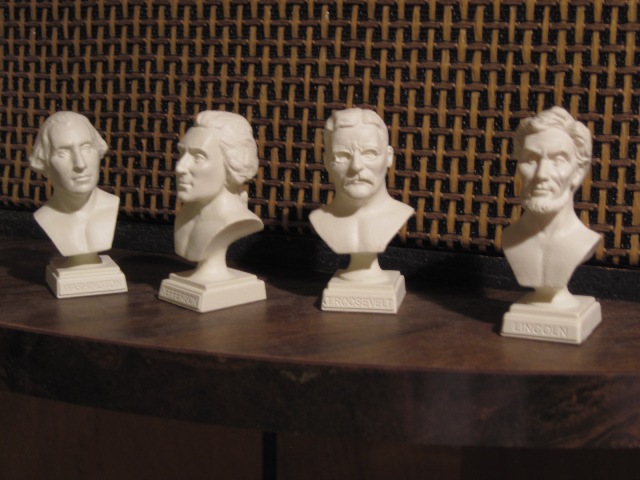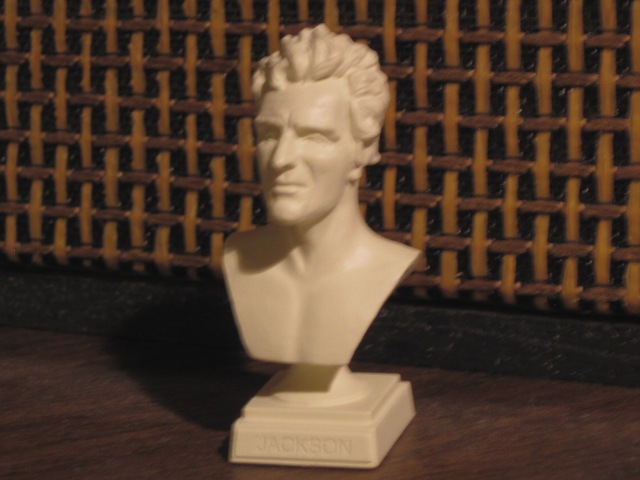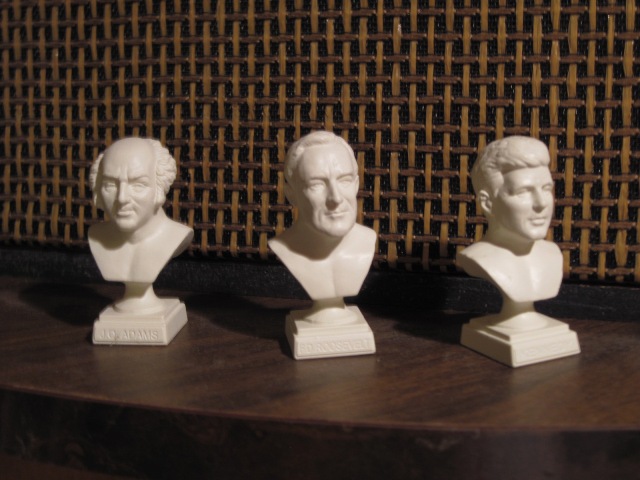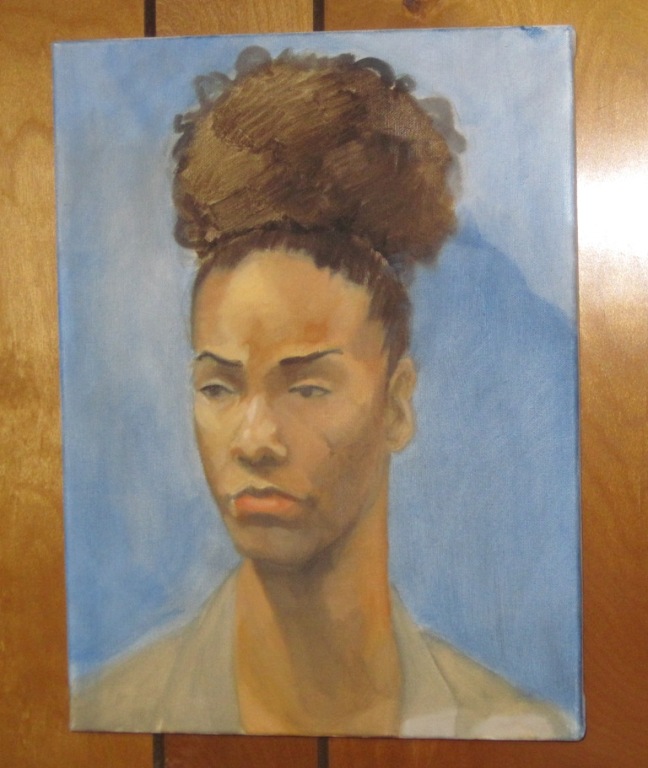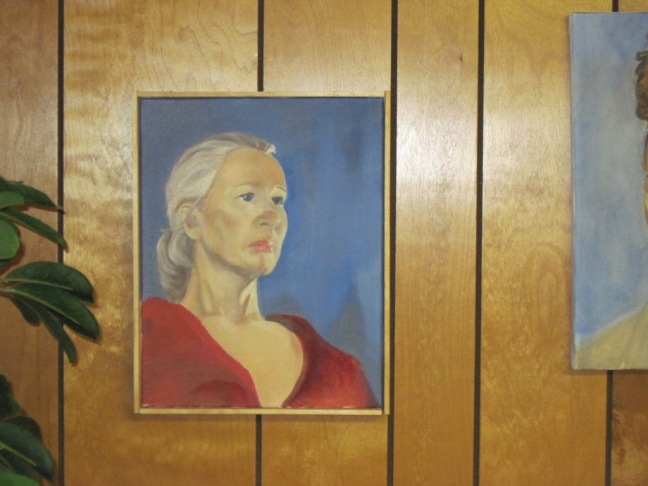Bust of Skanderbeg
Artist: unknown, possibly after Odhise Paskali’s 1968 work
Size: 8.5” x 2.25” x 2.25”
Materials: marble, nylon, plastic, paint
Package marked: Souvenir Tirana-Albania
Value: $1.91
Acquired: August 2018
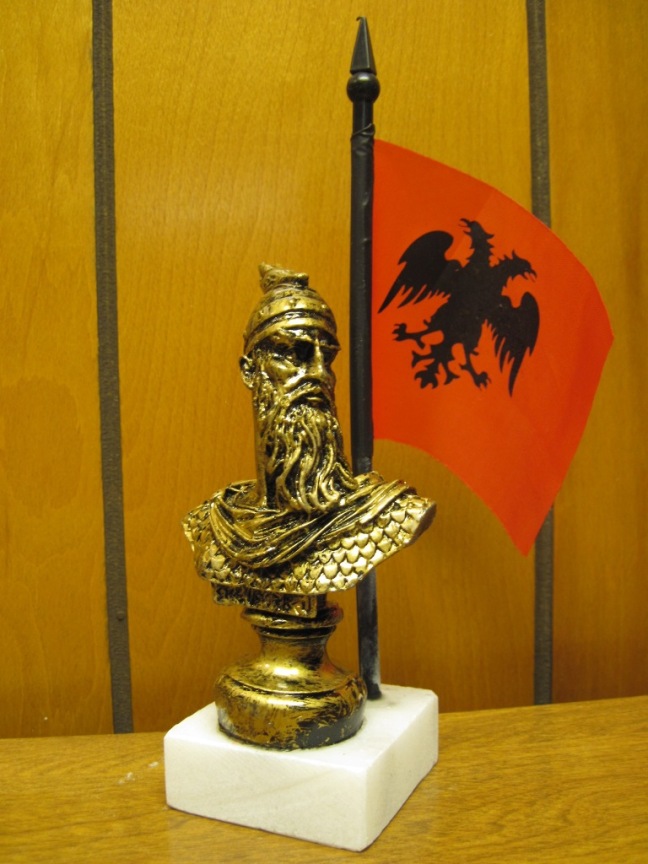
This is a small replica of a bust of George Castriot, aka Skanderbeg, who lived from 1405 to 1468. He’s known as the Invincible Albanian National Hero and Defender of Western Civilization. Okay, it’s a tourist souvenir from Tirana, the capital of the Republic of Albania.
There are A LOT of monumental statues all over the world that look like this, some busts, some equestrian. As far as I can tell, the original Albanian artist was Odhise Paskali (1903-1985). So the spread of these images might be a 20th and 21st century example of Albanian pride. They appear in Albania, Kosovo, Italy, and in Geneva, London, New York, Brussels, Rome, Budapest, and Rochester Hills, Michigan, etc.* I wonder how much is in reaction to the issues around the Serbian-Albanian conflicts or the 1999 Kosovo War.
Skanderbeg has a super story. In 1405, he was born into a noble Albanian family, who were Christian. When the Ottoman Empire took over, the noble family was required to send sons as a “blood tax.” The boys entered the Devshirme system, a military school intended to convert Christians to Islamic soldiers. George converted and rose through the ranks, fighting for the Ottomans. They named him Leader Alexander, İskender beğ, possibly compared to Alexander the Great. He became governor of a state.
After twenty years, he and his men deserted the Ottomans (on the battlefield) and converted to Christianity. He ruled a small area in Northern Albania, and successfully fought the surrounding forces under a red flag with a black eagle. He was admired for his military expertise, often defeating larger armies. Skanderbeg is sometimes considered the model of Western resistance to Muslim expansion. (Another resister was Vlad III Dracula.)
His flag was the double-headed black eagle on red. It was like his family crest, and came from the earlier Byzantine Empire. The double-headed eagle could be traced back to the Hittites, and can be a symbol of empire or power. The current flag of Albania has a similar design.
Bonus flag story from Wikipedia: “There is an incorrect version of the flag still commonly used by Albanians and officials, most notably used in the 100th Anniversary of the Independence of Albania [2012] in which the eagles were very noticeably deformed. The flags were ordered from a Chinese company that produced incorrect details. These flags were quickly removed after Independence day, but a few specimens can still be found.” ** [The one behind this bust is not the incorrect version, but it’s not the current official flag either.]
References: *”SKENDERBEU” today in 12 world metropolises lobbies for Kosovo and Albanians, by Astrit Leka, March 10, 2012, http://www.preshevajone.com/seknderbeu-sot-ne-12-metropole-boterore-lobon-per-kosoven-dhe-shqiptaret/
Wikipedia: ** “Festë me flamuj të deformuar” (Press release) (in Albanian). Top Channel. 22 November 2012. Retrieved 25 November 2012. Shqipëria po përgatitet të festojë 100-vjetorin e Pavarësisë me simbole të deformuar.
See also: Skanderbeg, an opera by Vivaldi. Skanderbeg, a poem by Longfellow.
